The Statue of Liberty is a colossal neoclassical sculpture located on Liberty Island in New York Harbor, New York City. It was a gift from the people of France to the United States and has become an enduring symbol of freedom and democracy. Designed by French sculptor Frédéric Auguste Bartholdi and its framework engineered by Gustave Eiffel, the statue was dedicated on October 28, 1886.
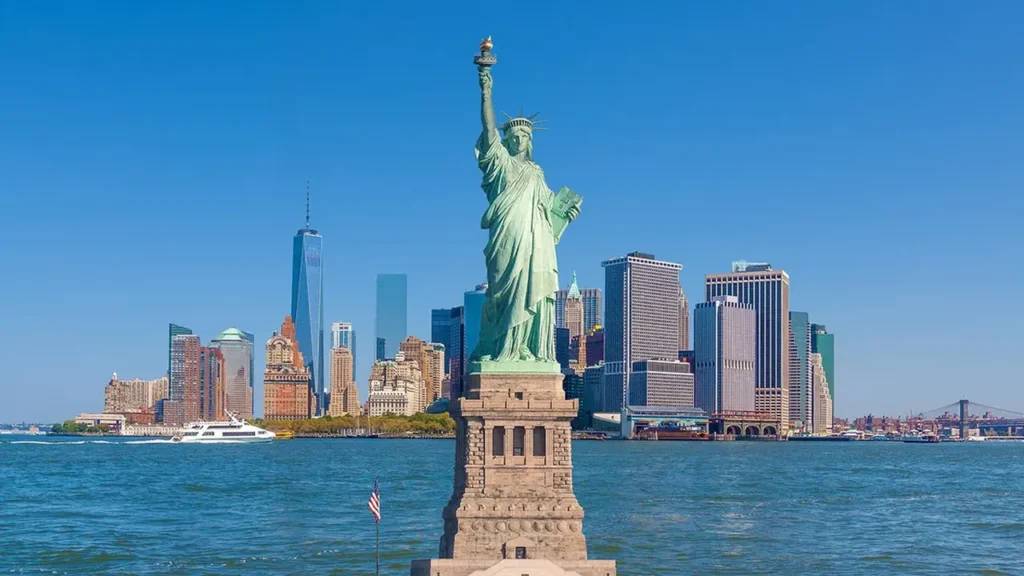
It stands at a height of about 305 feet (93 meters), including the pedestal, and depicts a robed female figure representing Libertas, the Roman goddess of freedom. The statue holds a torch in one hand and a tablet in the other, inscribed with the date of the American Declaration of Independence.
The Statue of Liberty has welcomed millions of immigrants to the United States over the years and is visited by numerous tourists who admire its iconic stature and significance.

Some information about the Statue of Liberty
Let’s explore information about the Statue of Liberty together!
Location and Design
The Statue of Liberty is situated on Liberty Island in the Upper New York Bay, near the entrance to New York Harbor. It was designed by French sculptor Frédéric Auguste Bartholdi and its internal framework was created by Gustave Eiffel, the engineer behind the Eiffel Tower. The statue is made of copper sheets assembled on a steel framework.
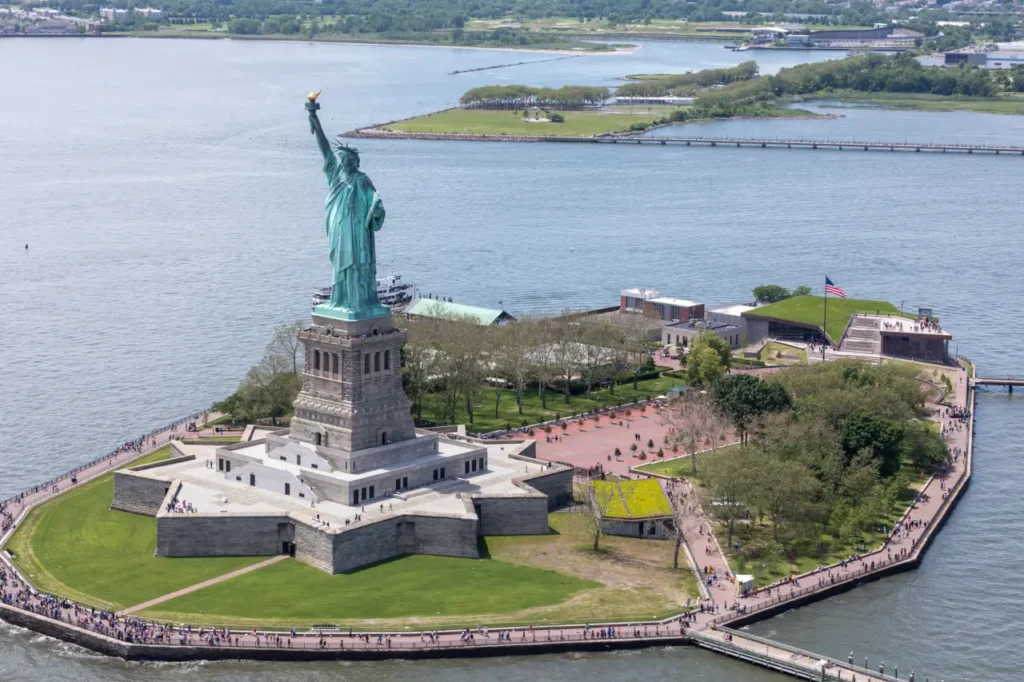
Symbolism and Inspiration
The Statue of Liberty was a gift from the people of France to the United States and is a symbol of freedom, democracy, and friendship between the two nations. It was dedicated on October 28, 1886, and has since become an enduring symbol of hope and liberty for immigrants arriving in America.
The statue’s design was influenced by ancient Roman goddesses, particularly Libertas, the goddess of liberty. It also drew inspiration from the Colossus of Rhodes, one of the Seven Wonders of the Ancient World.
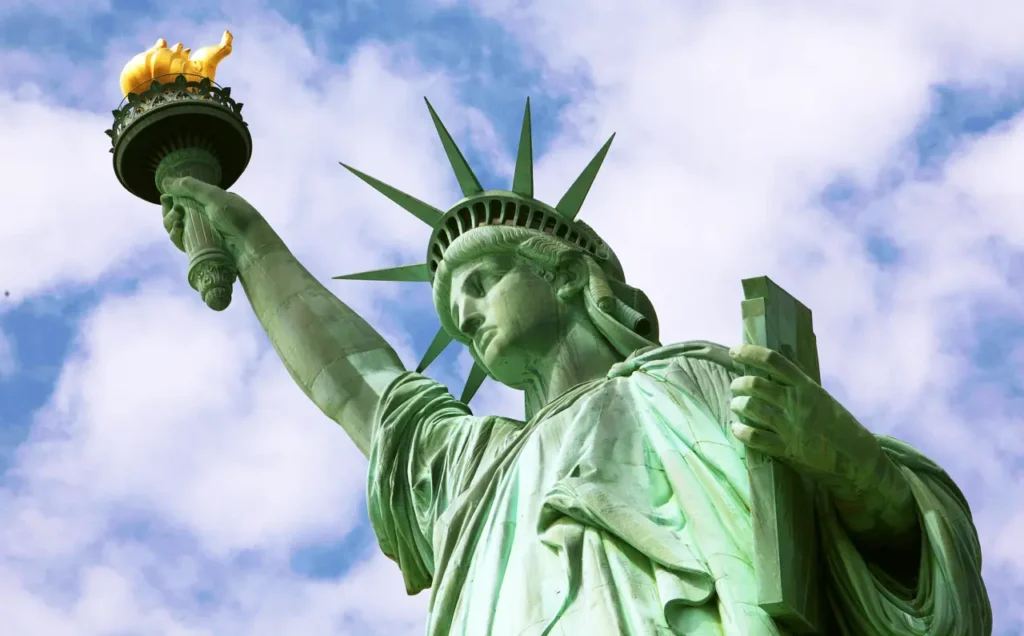
Statue’s Appearance
The statue stands at a height of about 151 feet (46 meters) from its base to the tip of the torch. Including the pedestal, it reaches a total height of approximately 305 feet (93 meters). The statue depicts a robed female figure, representing Libertas, the Roman goddess of freedom. She holds a torch in her right hand, symbolizing enlightenment, and carries a tabula ansata (a tablet with a raised letter) in her left hand, inscribed with the date “July IV MDCCLXXVI” (July 4, 1776), commemorating the American Declaration of Independence.
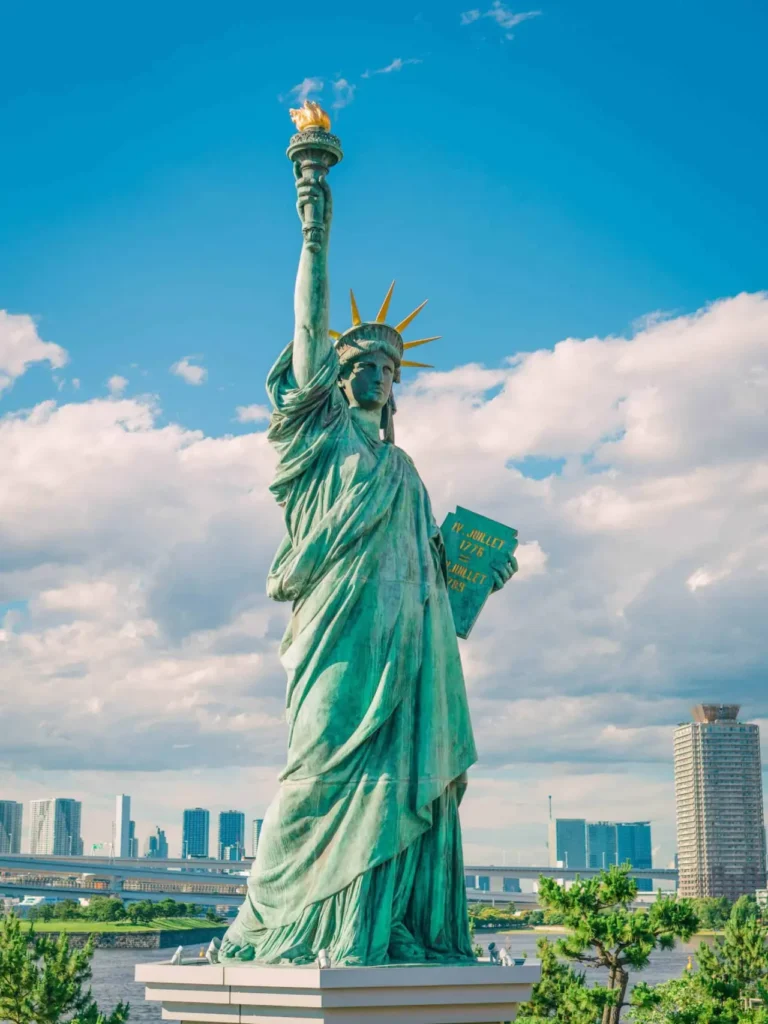
Pedestal and Museum
The statue stands on a pedestal designed by American architect Richard Morris Hunt. The pedestal houses the Statue of Liberty Museum, which showcases the statue’s history and significance through exhibits, artifacts, and multimedia presentations.
The Statue of Liberty was designated as a National Monument in 1924 and is managed by the National Park Service. It attracts millions of visitors each year who come to admire its grandeur, learn about its history, and appreciate its significance as a symbol of freedom and opportunity.
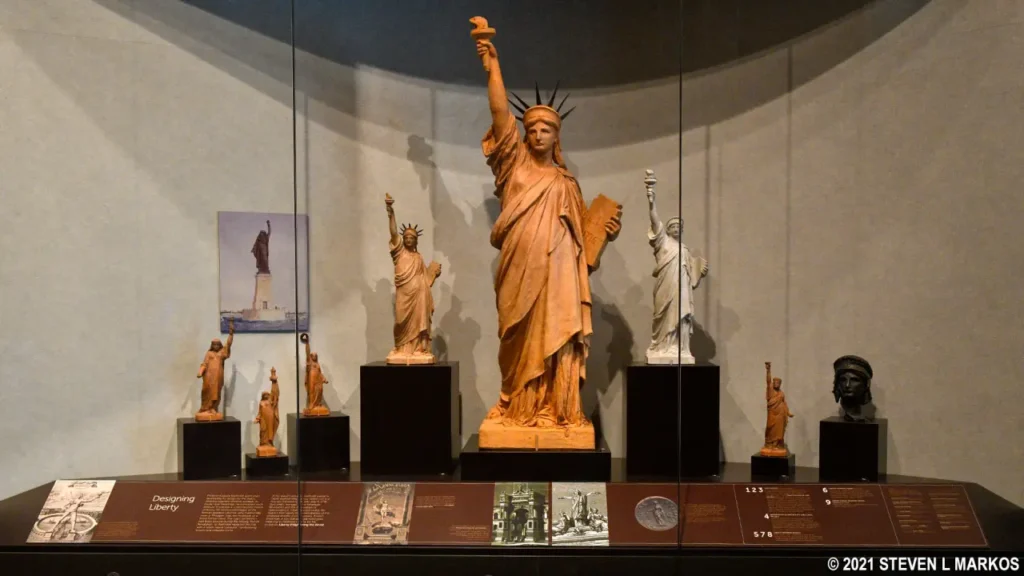
Access and Visiting
Visitors can reach Liberty Island by taking a ferry from Battery Park in Lower Manhattan or Liberty State Park in New Jersey. The statue’s crown and pedestal are accessible to visitors, providing panoramic views of the New York City skyline and the surrounding area. However, access to the crown requires a separate ticket and has limited availability.
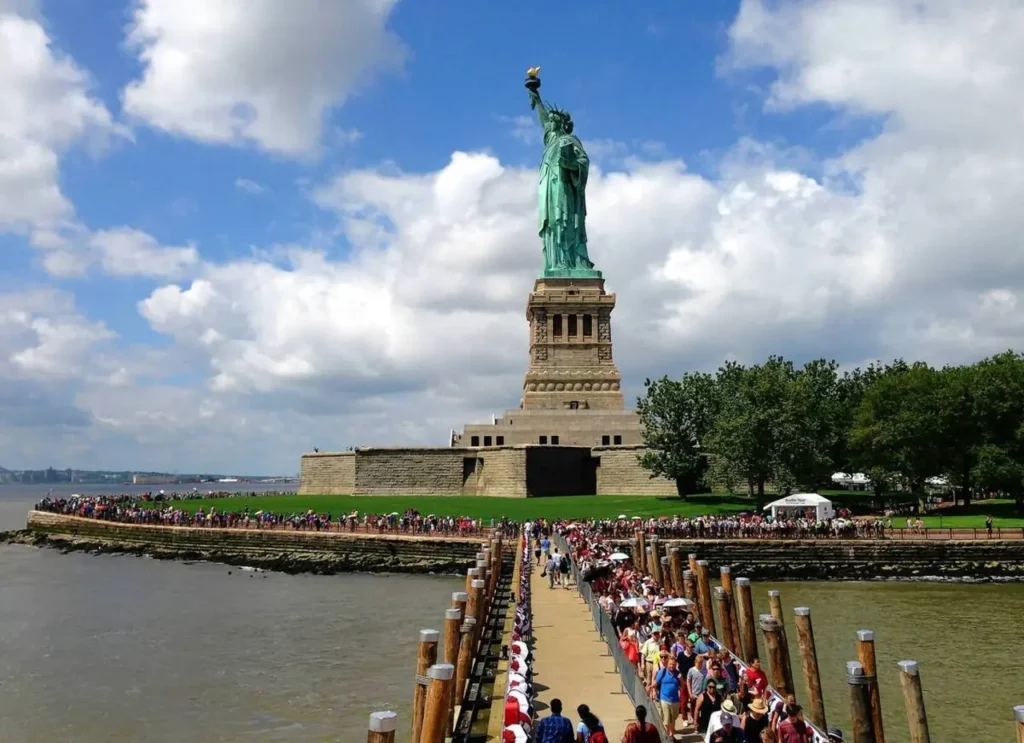
Construction
The Statue of Liberty was constructed in France and then disassembled into individual pieces for shipment to the United States. It was built using the repoussé technique, which involved hammering sheets of copper over a plaster model. The statue’s copper skin is about 3/32 of an inch (2.4 millimeters) thick.
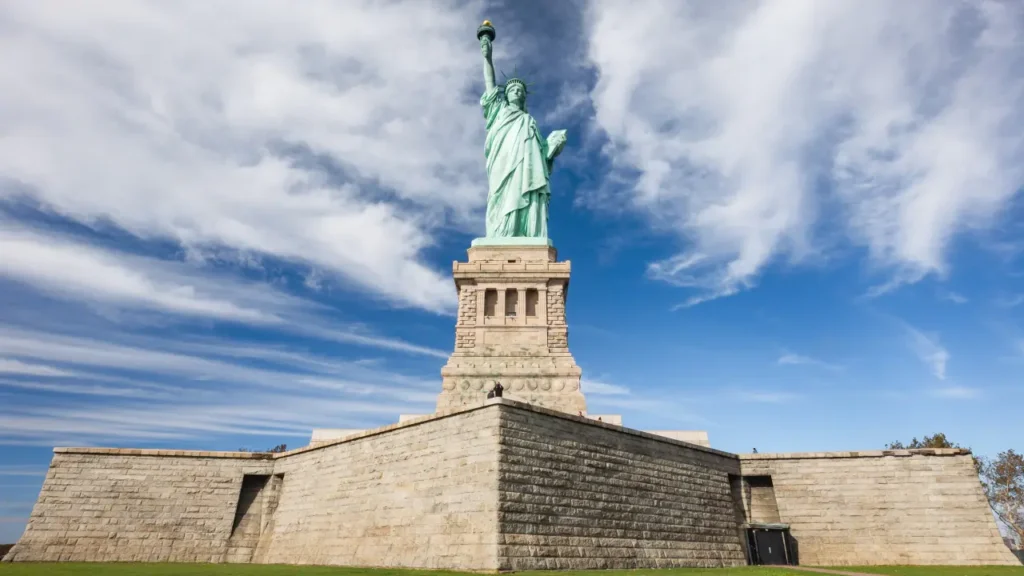
Arrival and Assembly
The statue arrived in New York Harbor in June 1885 aboard the French frigate Isère. It took four months to reassemble the statue on its pedestal, which had been designed by architect Richard Morris Hunt. The pedestal was completed in April 1886, and the statue was unveiled and dedicated on October 28, 1886.
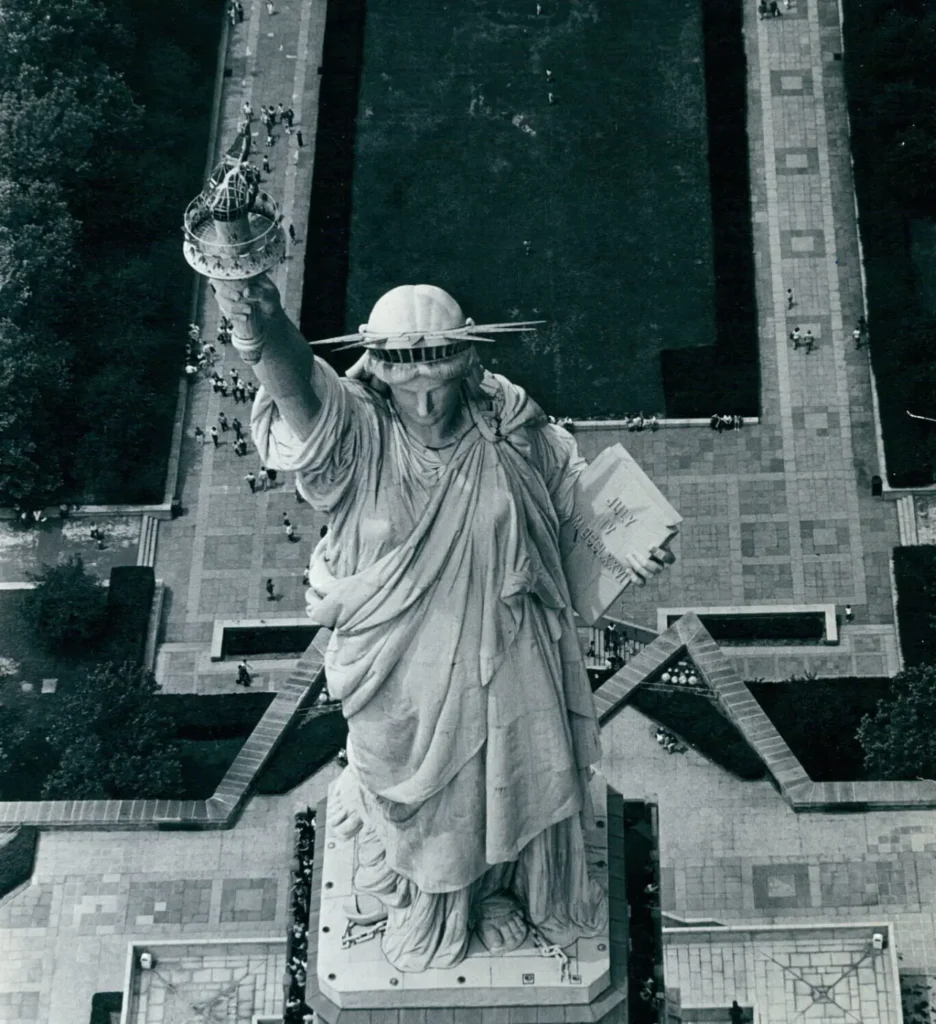
Dimensions
The statue’s total height, including the pedestal and foundation, is approximately 305 feet (93 meters). The height of the copper statue alone, from heel to top of the torch, is about 151 feet (46 meters). The statue weighs around 225 tons (204 metric tons).

Torch and Flame
The torch held by the statue originally contained electric lights, but due to safety concerns, it was replaced in 1916 with a gold-plated copper flame. The flame was again replaced in 1986 during the statue’s centennial restoration and is now covered in 24-karat gold leaf.
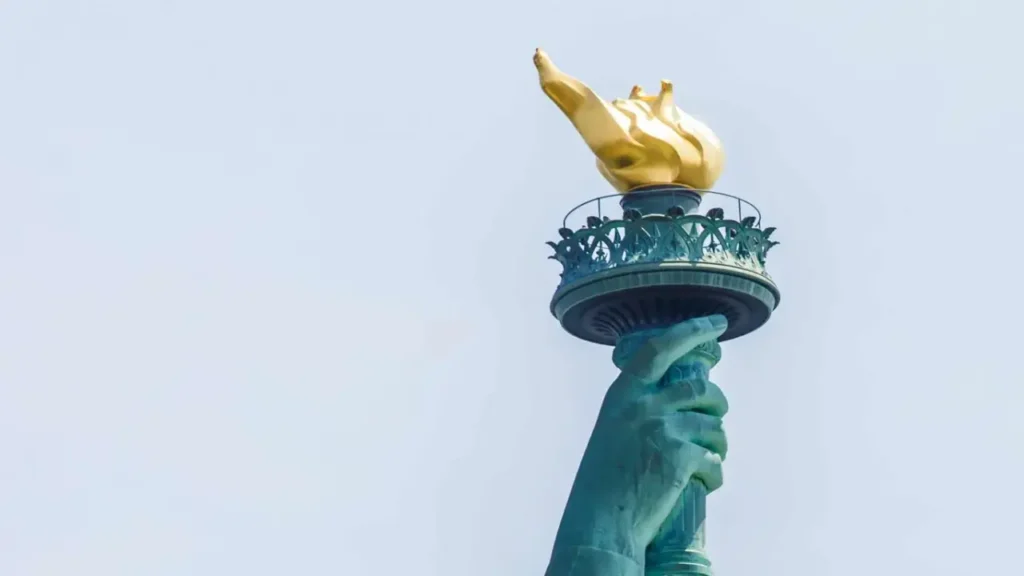
Pedestal Inscription
The pedestal of the statue is inscribed with a sonnet by American poet Emma Lazarus titled “The New Colossus.” The famous lines from the sonnet read: “Give me your tired, your poor, your huddled masses yearning to breathe free.”
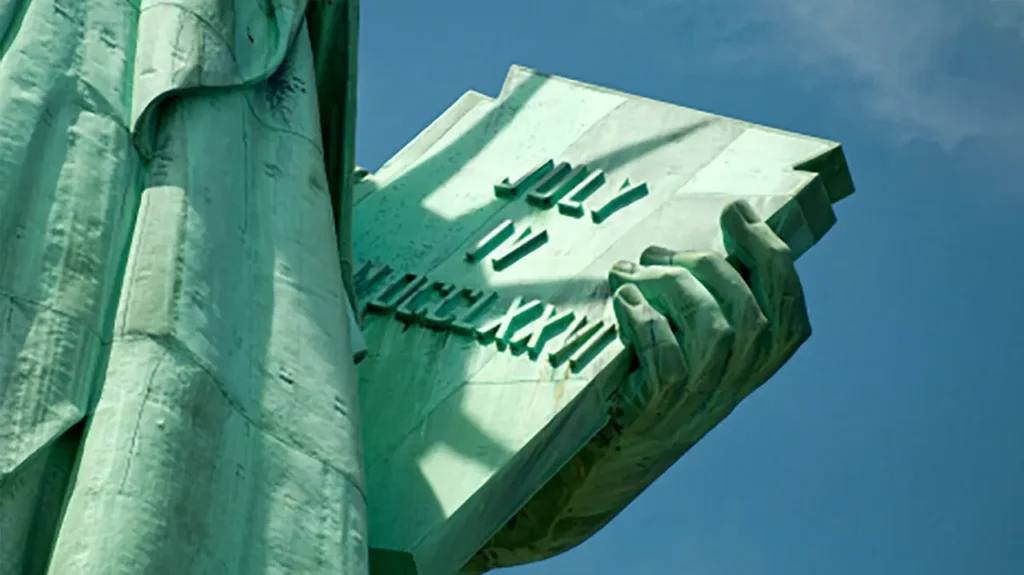
Restoration
The Statue of Liberty underwent a major restoration project from 1984 to 1986 in preparation for its centennial. The restoration included repairs to the statue’s copper skin, the replacement of the flame, and the construction of the Statue of Liberty Museum, which opened in 2019.

UNESCO World Heritage Site
In 1984, the Statue of Liberty, along with Ellis Island, where millions of immigrants were processed, was designated as a UNESCO World Heritage Site. It is recognized for its cultural significance and its representation of the ideals of liberty and democracy.
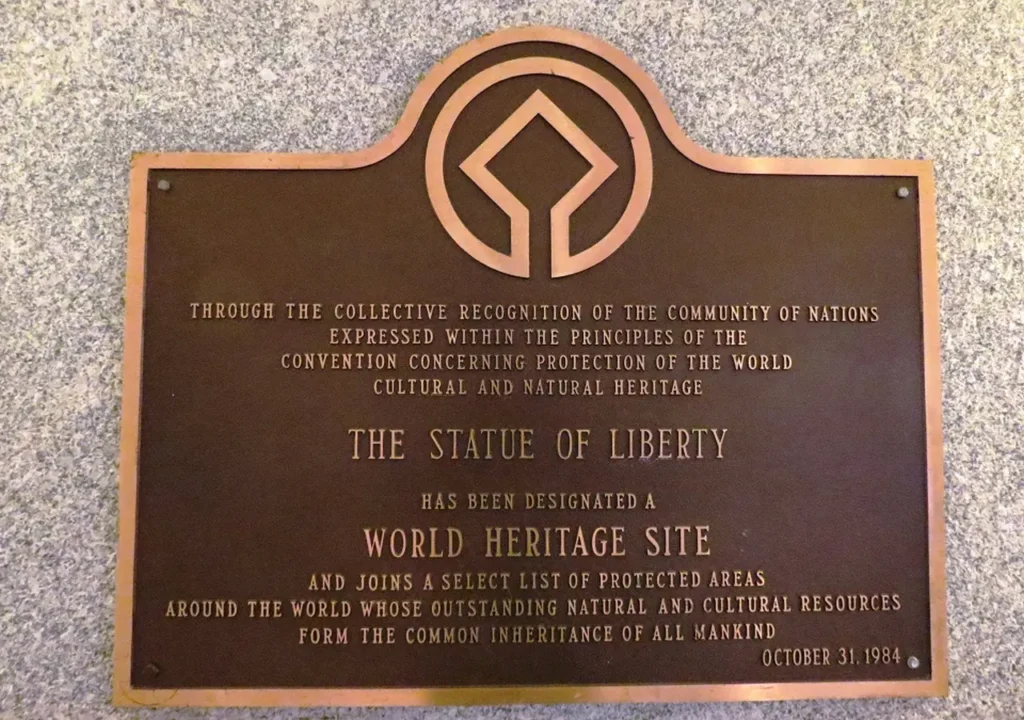
The Statue of Liberty continues to inspire and serve as a powerful symbol of freedom, welcoming immigrants, and the enduring values of the United States.
What should we pay attention to when visiting the Statue of Liberty
When visiting the Statue of Liberty, there are a few things to keep in mind to ensure a smooth and enjoyable experience:

- Statue of Liberty Tickets: Make sure to plan your visit in advance and obtain tickets for the Statue of Liberty and the ferry ride to Liberty Island. Tickets can be purchased online or at the ticket offices in Battery Park or Liberty State Park. It is advisable to book your tickets well in advance, especially during peak tourist seasons.
- Security Screening: Expect a security screening process similar to that at an airport when entering the Statue of Liberty and boarding the ferry. Avoid carrying prohibited items such as weapons, large bags, or sharp objects. It is recommended to check the National Park Service website for the most up-to-date information on permitted items.
- Timing and Crowds: The Statue of Liberty is a popular attraction, so it can get crowded, especially during peak tourist seasons and weekends. Consider visiting early in the morning or on weekdays to avoid larger crowds and long lines. Arriving early also allows for more time to explore the island and enjoy the views.
- Weather and Clothing: Check the weather forecast before your visit and dress accordingly. The statue is located on an exposed island, so be prepared for sun, wind, or rain. It is advisable to wear comfortable shoes and dress in layers to adjust to changing weather conditions.
- Crown Access and Pedestal Access: If you plan to visit the crown or the pedestal of the statue, be aware that access is limited, and separate tickets are required. Crown access involves climbing a narrow staircase of 354 steps, so ensure that you are physically able to make the ascent.
- Food and Water: There are limited dining options available on Liberty Island, so consider bringing your own snacks or purchasing food before boarding the ferry. It is also a good idea to carry a water bottle to stay hydrated during your visit.
- Photography: The Statue of Liberty provides incredible photo opportunities, so don’t forget to bring your camera or smartphone. However, be mindful of others and follow any designated photography guidelines or restrictions in place.
- Enjoy the Surroundings: Take the time to explore Liberty Island and enjoy the breathtaking views of the statue, the New York City skyline, and the surrounding area. Visit the Statue of Liberty Museum to learn more about its history and significance.

When is the best time to visit the Statue of Liberty?
The best time to visit the Statue of Liberty largely depends on your preferences and priorities. Here are a few factors to consider:
- Weather: The weather can greatly impact your visit. The summer months from June to August tend to be the warmest, but they can also be the busiest and most crowded. Spring (April to May) and fall (September to October) generally offer milder temperatures, making them pleasant times to visit with fewer crowds. Winter (December to February) can be chilly, but it may offer a more tranquil experience with fewer visitors.
- Crowds: If you prefer to avoid large crowds and long lines, consider visiting on weekdays rather than weekends. Early mornings and late afternoons also tend to be less crowded. Additionally, visiting during the shoulder seasons (spring and fall) can offer a better chance of a quieter experience compared to the peak summer season.
- Time of Day: The Statue of Liberty is open throughout the day, but visiting early in the morning or later in the afternoon can provide a more peaceful experience. This can also be a great time for capturing beautiful photographs as the lighting is often softer and more favorable.
- Special Events: Check the National Park Service website or other sources for any special events or activities taking place during your planned visit. Certain events, such as Independence Day celebrations or commemorative ceremonies, can add an extra layer of significance to your visit.
- Personal Preferences: Consider your own interests and priorities. If you enjoy vibrant atmospheres and don’t mind larger crowds, visiting during peak tourist seasons can still be enjoyable. However, if you prefer a more serene and intimate experience, choosing a quieter time of the year may be more suitable for you.

Ultimately, the best time to visit the Statue of Liberty is subjective and can vary based on individual preferences. It’s a good idea to check the National Park Service website or contact them directly for the latest information on visitor statistics, events, and any potential closures or restrictions that may impact your visit.
The Statue of Liberty continues to be an enduring symbol of America’s values and ideals, representing the country’s commitment to freedom and welcoming immigrants from around the world.
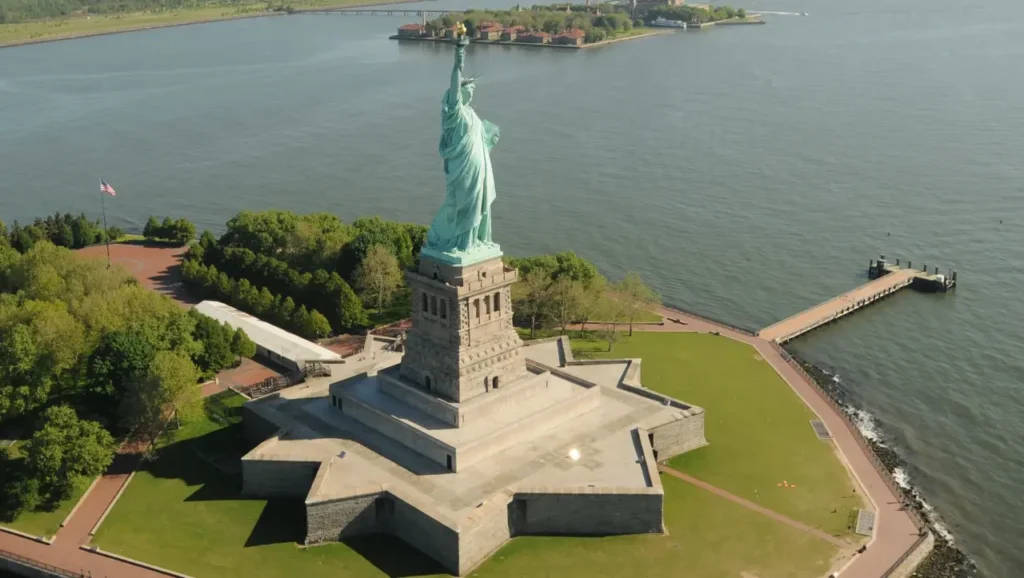
The above information provides some information about the Statue of Liberty. It is hoped that after reading this article, you have gained useful knowledge for your experiences. See you next topics!








